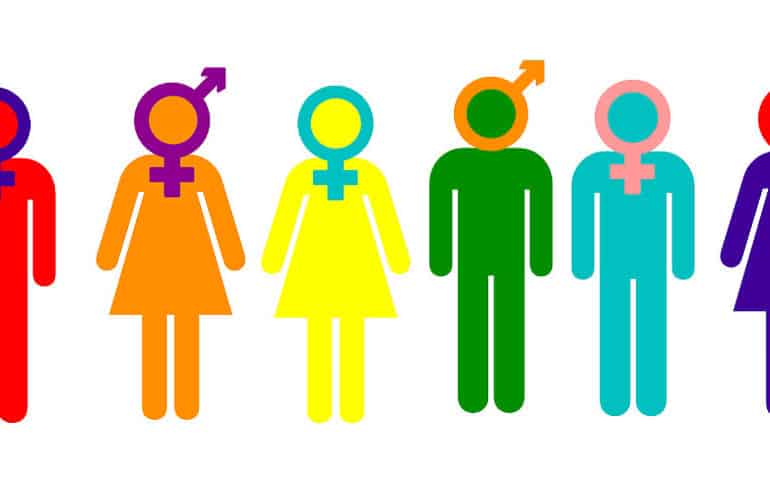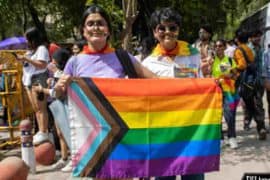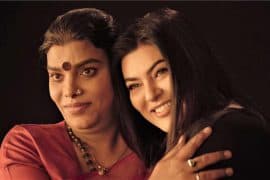For a long time, our society has considered heterosexual, and cisgendered identities as the norm. With changing times, LGBTQ+ persons are being recognised and celebrated. Here is a glossary that will give you a glimpse into the concept of varied gender identities and their expressions.
Sex – Sex refers to the biological anatomy of a person (Eg- male, female, intersex)
Gender – Gender refers to the psychological identity of a person (Example – Cisgender, Transgender, Agender, Gender fluid, etc). Gender is a social construct and is based on the notions of societal roles, clothing, expression. Gender binary refers to an idea that gender and its expression is strictly male/masculine or female/feminine based on sex assigned at birth. Such an idea becomes problematic for those who don’t fit into such a system.Gender Identity- Gender Identity refers to a person’s internal awareness of their gender.
Sexual Orientation – A person’s feeling of attraction to other people. A person may be attracted to the same sex (lesbian, gay), opposite sex (heterosexual), both sexes (bisexual), or without reference to the sex or gender (pansexual). Some people do not exhibit sexual attraction at all and, hence, they are called asexuals. While sexual orientation is about attraction to other people, gender identity is about a deep-seated sense of self.
Gender Dysphoria – Involves a conflict between a person’s sex (biological self) and gender (psychological self). The presence of Gender Dysphoria is the medical diagnosis of being transgender as defined by the American Psychiatric Association’s Diagnostic and Statistical Manual of Mental Disorders, fifth edition (DSM-5). The inclusion of gender dysphoria as a diagnosis in DSM-5 is controversial in transgender communities because it implies that being transgender is a mental illness rather than a valid identity. But because a formal diagnosis is generally required in order to receive or provide treatment in India, it does enable access to medical care for some people who wouldn’t ordinarily be eligible to receive it.
Transition – According to DSM-5, a transition is seen as a treatment for gender dysphoria. Transition usually involves counselling, cross-sex hormones, puberty suppression, and gender reassignment surgery. Some people may have a strong desire to be treated as a different gender without seeking medical treatment or altering their body. They may only want support to feel comfortable in their gender identity. Others may want more extensive treatment including hormone treatment, and gender reassignment surgery leading to a transition to the opposite sex. Some may choose hormone treatment or surgery alone.
Transgender/Transexual – Usually abbreviated as ‘trans’, it refers to a person whose gender identity does not match the biological sex they were assigned at birth. A transgender boy refers to a person who was born as a female, but their gender identity is a male. While a transgender girl refers to a person who was born as a male, but their gender identity is a female.
Intersex – A disorder of sexual development, results in a reproductive, genetic, genital, or hormonal configuration such that the person’s body can’t be easily categorised as male or female.
Kinnar Community – Usually known as ‘Hijras’ in North India, the Kinnars are a marginalised group of eunuchs, intersex, and transgender people. They have been legally recognised as the third gender in our country. Please note the words ‘chakka’, and ‘hijra’ are offensive words and one should refrain from using them.
Agender – A person who doesn’t identify as a man, or a woman can be labeled as Agender.
Gender Fluid – A person whose gender identity/expression shifts from male to female is gender fluid.
Gender Queer – A person whose identity doesn’t follow the gender binary. Such a person will identify as a combination of both genders, neither of the two genders, or somewhere in between.
Pronouns – One should use appropriate pronouns for a person based on their gender identity. It’s best to ask a person which pronouns they use. Apart from the commonly used ‘he’, ‘she’ pronouns, genderqueer people use ‘they’ or the newly created nongendered pronouns; “zie” and “per.”
Satrangi Salam!
Reference: National Geographic Magazine, January 2017
Feature Image Credits: Tele Juice
Raabiya Tuteja
[email protected]




Comments are closed.